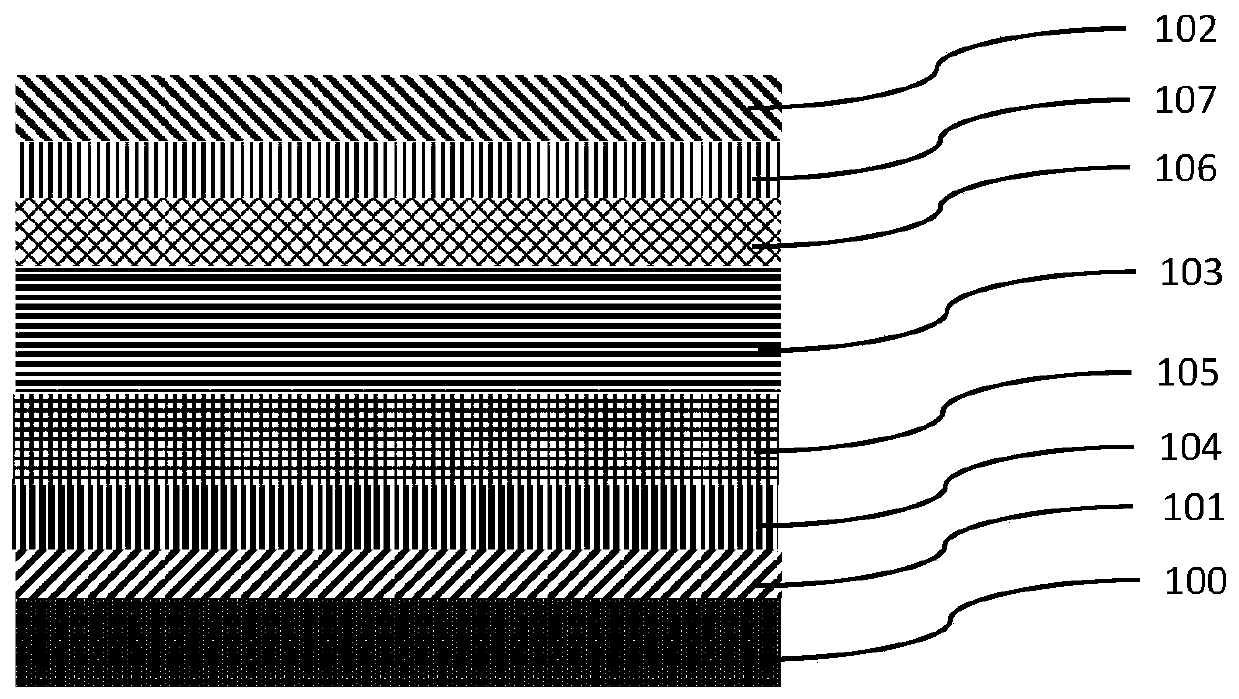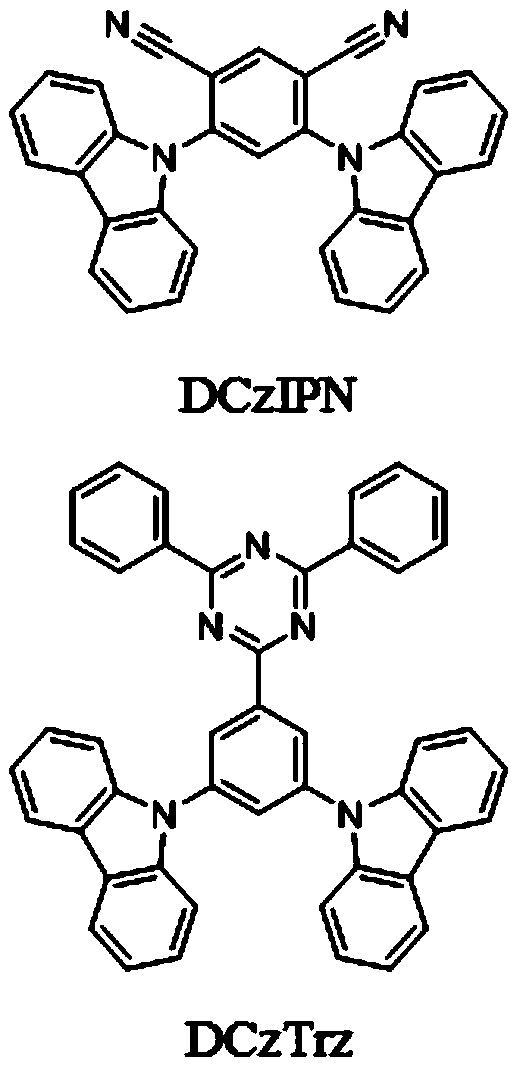Electroluminescence device and its light-emitting layer and application
A technology of electroluminescent devices and light-emitting layers, which is applied in the direction of electric solid-state devices, electrical components, semiconductor devices, etc., and can solve problems such as the gap in luminous efficiency
- Summary
- Abstract
- Description
- Claims
- Application Information
AI Technical Summary
Problems solved by technology
Method used
Image
Examples
Embodiment 1
[0061] The present embodiment is an electroluminescence device, the structure is:
[0062] ITO / PEDOT:PSS / TFB / DCzIPN:(CdSe / ZnS quantum dot) / PO-T2T / LiF / Al.
[0063] Among them, the light-emitting layer uses the organic material DCzIPN as the energy donor material, the decay lifetime of the excited state is 1.2 microseconds, the peak wavelength of the emission spectrum is 447nm, and the energy level difference between the singlet state and the triplet state is 0.05eV;
[0064] CdSe / ZnS quantum dots (CdSe / ZnS quantum dots) are used as nanocrystalline semiconductor materials, the decay lifetime of the excited state is 0.05 microseconds, and the peak wavelength of the emission spectrum is 626nm.
[0065] The preparation steps of the above-mentioned electroluminescent device are as follows:
[0066] (1) Substrate treatment: Clean the surface of the substrate with glass cleaner and pure water successively, dry it with nitrogen, bake at 150°C for 1 hour, and treat it with UV for 5 min...
Embodiment 2
[0072] The present embodiment is an electroluminescence device, the structure is:
[0073] ITO / PEDOT:PSS / TFB / DCzTrz:(InP / ZnSeS quantum dot) / PO-T2T / LiF / Al.
[0074] Among them, the light-emitting layer uses the organic material DCzTrz as the energy donor material, the decay lifetime of the excited state is 3.1 microseconds, the peak wavelength of the emission spectrum is 440nm, and the energy level difference between the singlet state and the triplet state is 0.25eV;
[0075] Taking InP / ZnSeS quantum dot (InP / ZnSeS quantum dot) as the nano-crystal semiconductor material, the decay lifetime of the excited state is 0.03 microseconds, and the emission spectrum peak wavelength is 520nm.
[0076] The above electroluminescent device was prepared similarly to Example 1.
Embodiment 3
[0078] The present embodiment is an electroluminescence device, the structure is:
[0079] ITO / PEDOT:PSS / TFB / CPC:(CdSe / ZnS quantum dot) / PO-T2T / LiF / Al.
[0080] Among them, the light-emitting layer uses the organic material CPC as the energy donor material, the decay lifetime of the excited state is 47 microseconds, the peak wavelength of the emission spectrum is 490nm, and the energy level difference between the singlet state and the triplet state is 0.04eV;
[0081] Taking (CdSe / ZnS quantum dot) as a nanocrystalline semiconductor material, the decay lifetime of its excited state is 0.05 microseconds, and the peak wavelength of the emission spectrum is 626nm.
[0082] The above electroluminescent device was prepared similarly to Example 1.
PUM
 Login to View More
Login to View More Abstract
Description
Claims
Application Information
 Login to View More
Login to View More - R&D
- Intellectual Property
- Life Sciences
- Materials
- Tech Scout
- Unparalleled Data Quality
- Higher Quality Content
- 60% Fewer Hallucinations
Browse by: Latest US Patents, China's latest patents, Technical Efficacy Thesaurus, Application Domain, Technology Topic, Popular Technical Reports.
© 2025 PatSnap. All rights reserved.Legal|Privacy policy|Modern Slavery Act Transparency Statement|Sitemap|About US| Contact US: help@patsnap.com



